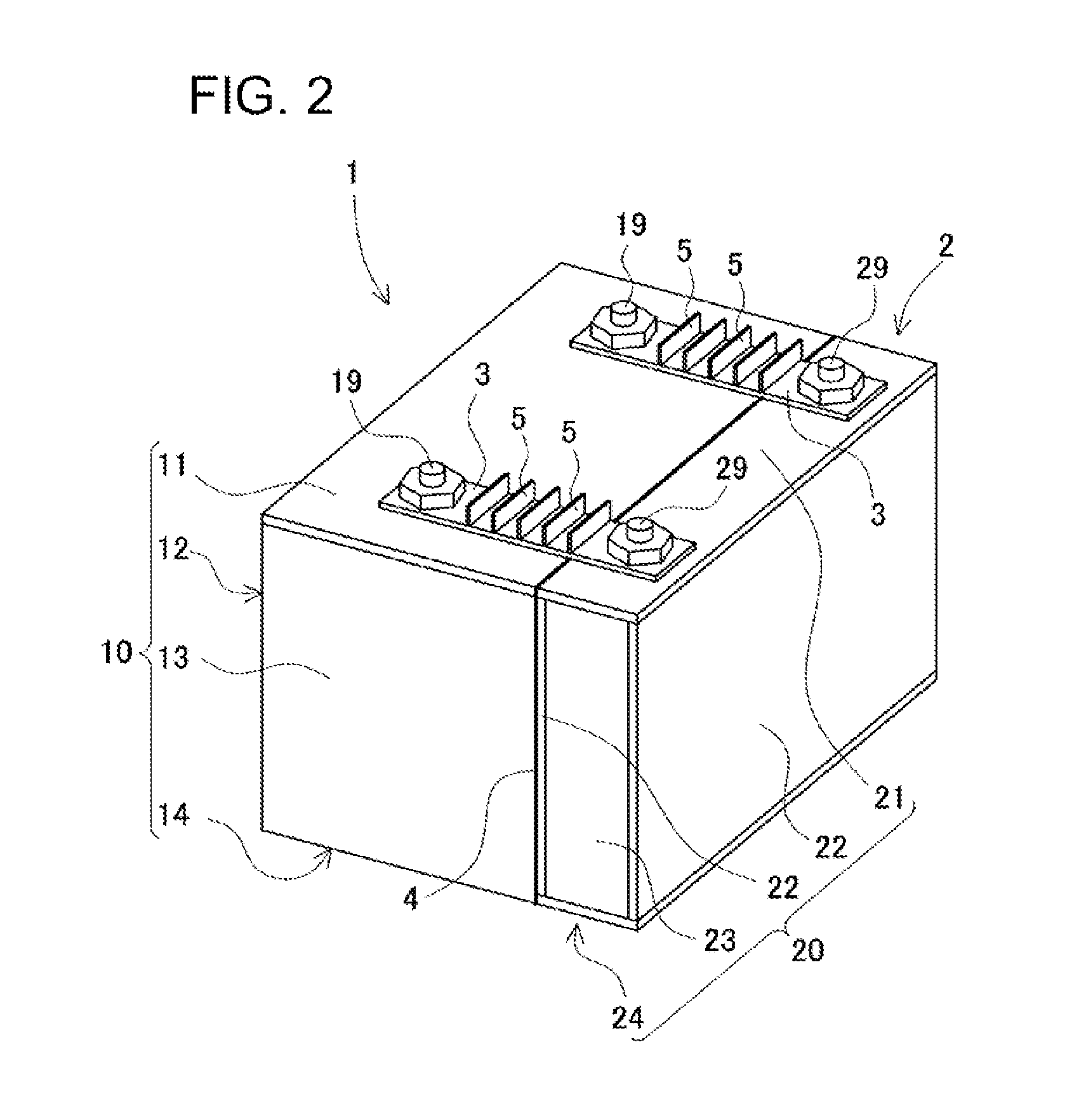Power supply device for vehicle performing regenerative braking
a technology of regenerative braking and power supply device, which is applied in the direction of capacitor propulsion, battery, cell component, etc., can solve the problems of increasing the temperature of the battery and demeriting the inability to safely use the sub-battery, so as to reduce the degradation of the lead-acid battery by large current, increase the output, and efficient radiation
- Summary
- Abstract
- Description
- Claims
- Application Information
AI Technical Summary
Benefits of technology
Problems solved by technology
Method used
Image
Examples
Embodiment Construction
[0022]Hereinafter, the embodiment of the present invention will be described referring to drawings. However, the following embodiments illustrate a power supply device for a vehicle performing regenerative braking which is aimed at embodying the technological concept of the present invention, and the present invention is not limited to the power supply device for a vehicle performing regenerative braking described below. Further, the members illustrated in Claims are not limited to the members in the embodiments.
[0023]The power supply device shown in a block diagram of FIG. 1, is installed in the vehicle performing regenerative braking. Preferably, it is installed in the vehicle having a regenerative braking function and an idle stop (idle reduction) function. This power source device includes a lead-acid battery 1 and a power storage device 2. The lead-acid battery 1 and the power storage device 2 are connected in parallel, and are charged with regenerative generation power. The re...
PUM
 Login to View More
Login to View More Abstract
Description
Claims
Application Information
 Login to View More
Login to View More - R&D
- Intellectual Property
- Life Sciences
- Materials
- Tech Scout
- Unparalleled Data Quality
- Higher Quality Content
- 60% Fewer Hallucinations
Browse by: Latest US Patents, China's latest patents, Technical Efficacy Thesaurus, Application Domain, Technology Topic, Popular Technical Reports.
© 2025 PatSnap. All rights reserved.Legal|Privacy policy|Modern Slavery Act Transparency Statement|Sitemap|About US| Contact US: help@patsnap.com



